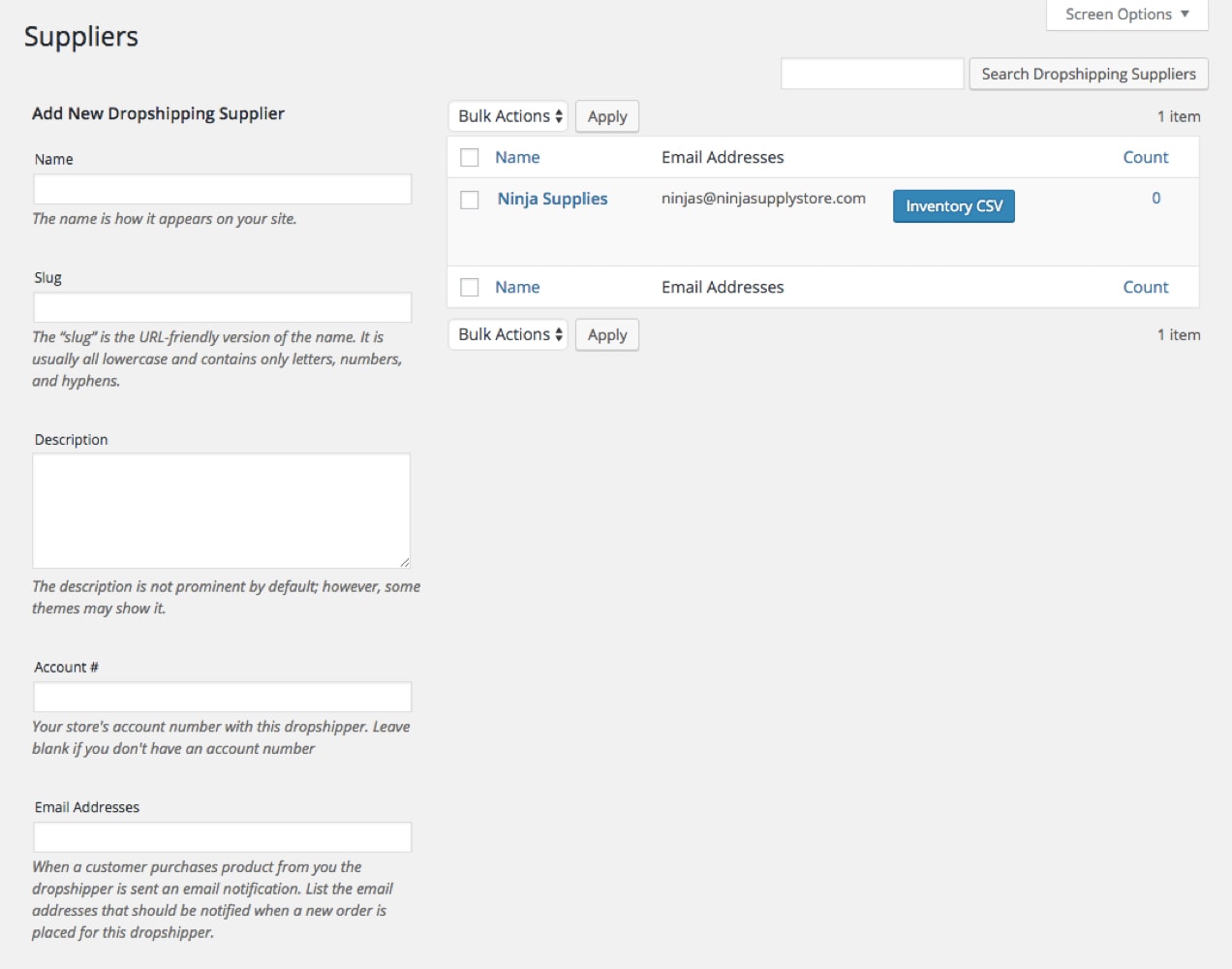If you’re considering dropshipping, you’re certainly not alone. At the beginning of 2020, searches for “dropshipping” hit an all-time high, according to Google Trends.
The concept is simple: you list products for sale on your site. The products themselves are manufactured and held by a third party. When someone places an order, the third party ships them directly to the consumer.
The ability to add inventory without having to deal with production, stocking, or fulfilling orders may seem like a dream. And the success of well-known brands that were built on dropshipping, like Wayfair, make it all the more tempting.
But is dropshipping worth it? Let’s explore some of the advantages and disadvantages to help you make the best decision for your business. If you decide it’s the route you want to take, read our full guide on how to start dropshipping, next.
The pros of dropshipping
1. Low barrier to entry
Both traditional and online stores often require a hefty financial investment to develop, manufacture, and source products. Additional costs associated with stocking inventory, maintaining a physical presence, staffing locations, and marketing to new customers can really add up!
Dropshipping has a much lower barrier to entry because you don’t have to worry about developing new products or purchasing and storing inventory.
2. No inventory management
Traditionally, retailers pay upfront production costs, wait for delivery, and then stock products in a shop or warehouse. If a product isn’t available for customers when they want to make a purchase, sales are lost.
Inventory management also requires storage and handling costs — someone has to fold shirts and put them on the shelves! And you might purchase or manufacture large volumes of inventory that don’t sell, so there’s significant financial risk involved.
Businesses that dropship, on the other hand, remove those risks. A third party handles inventory, and products are available to the customer on demand.
3. No need for a physical storefront or warehouse
Dropshipping nixes the need for a physical storefront — which means no lease, no mortgage, no construction costs, no upkeep.
4. Improved cash flow
Typically, retailers purchase products, wait for them to arrive, and then sell them to customers. For a period of time, they’ve spent a significant amount of money without the ability to make it back.
With dropshipping, you receive payment for the products at the same time you pay your providers — or before. This frees up cash for marketing and growth.
5. Test new products with minimal risk
Innovation is critical for keeping customers engaged, but fear of investing money into new products with unproven track records prevents many business owners from moving forward.
Dropshipping lets you test new product lines without spending lots of money. If customers don’t respond to a new item, simply remove it from your store!
6. Create passive income
Passive income is earned with little to no daily effort (though it does require upfront work and consistent monitoring). With dropshipping, it’s very possible for you to be working on other aspects of your business (or even be asleep!) while orders are placed and fulfilled automatically. With a traditional retail model, products couldn’t go out without your involvement.

The cons of dropshipping
↑ Back to top1. High competition
The same low barrier to entry that makes dropshipping attractive creates heavy competition. Other stores aren’t selling similar products — they’re selling the same products from the same third-party manufacturers. You’ll have to find other ways to stand out in order to compete.
2. Lack of control
When dropshipping, inventory rarely passes through your hands, so you don’t have the chance to ensure that products are in top condition. Without quality control, you’re putting your store’s reputation in the hands of a third party. One bad batch of products could lead to unhappy customers and lost sales. And unless you have a special deal with your suppliers, you can’t use packaging to make your store unique, include coupons to drive additional purchases, add thank you notes that encourage customer loyalty, or customize boxes and envelopes.
Fee structures can also be complicated and can change with little notice. As your store grows and develops a strong reputation, you can start negotiating exclusive deals with suppliers. But until then, you’ll have less favorable profit margins and be a lower priority for vendors. High fees can quickly eat away at profits or force you to price goods out of reach for your customers.
3. Bulk discounts
One of the reasons big box retailers can sell products at such low prices is economies of scale. They get major discounts on products because they purchase such a large volume, and they pass those discounts on to shoppers.
With dropshipping, you can say goodbye to bulk discounts, since you’re essentially purchasing products one at a time. Until you generate enough sales to give you some negotiation leverage, you’re paying what the suppliers ask.
4. Disjointed orders
If you have a variety of products listed on your store, they may come from different suppliers. Customers may receive multiple packages for the same order, which can lead to high shipping costs, wasteful packaging, confusing branding, and annoyed customers.
5. Race to the bottom
Differentiating your store can be difficult. Many stores try to compete on price but, with so much competition, find themselves setting lower and lower prices. If you’re not careful, you’ll sell lots of inventory, but at prices so low that you end up losing money.
How to make dropshipping work for you
↑ Back to topSuccessful dropshipping starts with picking the right products and vendors. Sloppy packaging or delayed shipping reflects poorly on you. Take the extra time to thoroughly vet all of your potential vendors.
Here’s how to decide which products to dropship
Marketing, branding, and customer service are absolutely critical to success with dropshipping. Since anyone can sell similar products and you don’t want to only compete on price, make your store stand out by establishing a unique brand and offering superior service. Supporting a cause related to what you sell is one way to do this. And because margins can be very thin with dropshipping, it’s important to turn one-time buyers into repeat customers.
You’ll also need an attractive, effective website. With WooCommerce extensions for everything from marketing to bookkeeping, you don’t have to work on your store 24/7. You can start dropshipping inexpensively and scale your store as much as you’d like.

The WooCommerce Dropshipping extension was designed to make the entire process hassle free, allowing you to:
- Automatically send order notifications to suppliers
- Import inventory on a per-supplier basis
- Assign products to specific suppliers
- Create special, locked-down accounts for suppliers with order and shipping information and packing slips
- Customize packing slips for consistency
Is dropshipping worth it? Yes, if you have the right tools. WooCommerce provides the perfect launching pad for dropshipping businesses. Create an online store in no time, enjoy world-class support, and take advantage of thousands of marketing, payments, and management tools.
Start your dropshipping store with WooCommerce
About





